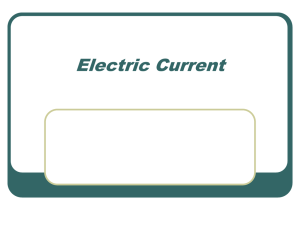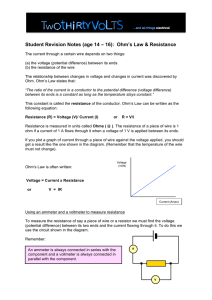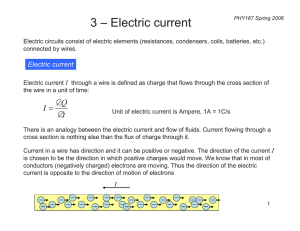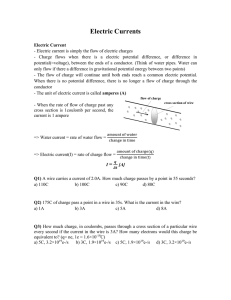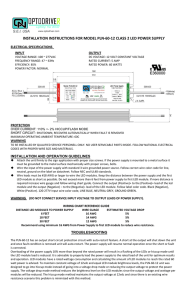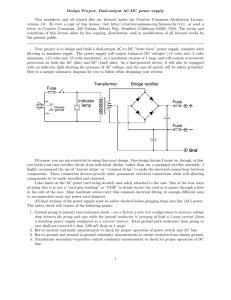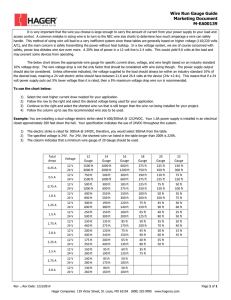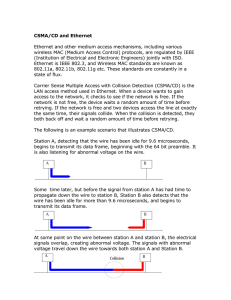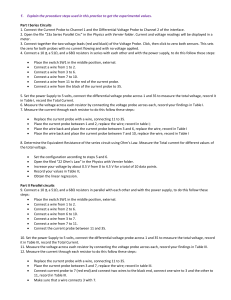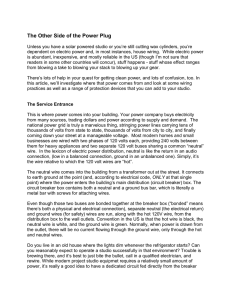Last class we discussed voltage, current and
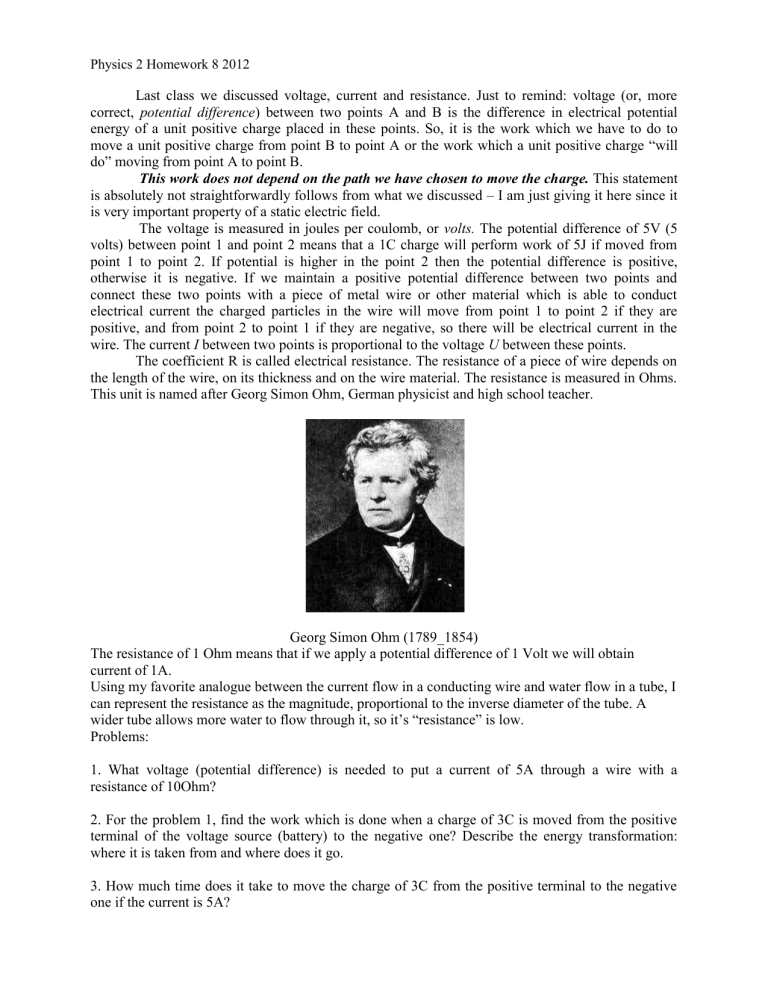
Physics 2 Homework 8 2012
Last class we discussed voltage, current and resistance. Just to remind: voltage (or, more correct, potential difference ) between two points A and B is the difference in electrical potential energy of a unit positive charge placed in these points. So, it is the work which we have to do to move a unit positive charge from point B to point A or the work which a unit positive charge “will do” moving from point A to point B.
This work does not depend on the path we have chosen to move the charge. This statement is absolutely not straightforwardly follows from what we discussed – I am just giving it here since it is very important property of a static electric field.
The voltage is measured in joules per coulomb, or volts. The potential difference of 5V (5 volts) between point 1 and point 2 means that a 1C charge will perform work of 5J if moved from point 1 to point 2. If potential is higher in the point 2 then the potential difference is positive, otherwise it is negative. If we maintain a positive potential difference between two points and connect these two points with a piece of metal wire or other material which is able to conduct electrical current the charged particles in the wire will move from point 1 to point 2 if they are positive, and from point 2 to point 1 if they are negative, so there will be electrical current in the wire. The current I between two points is proportional to the voltage U between these points.
The coefficient R is called electrical resistance. The resistance of a piece of wire depends on the length of the wire, on its thickness and on the wire material. The resistance is measured in Ohms.
This unit is named after Georg Simon Ohm, German physicist and high school teacher.
Georg Simon Ohm (1789_1854)
The resistance of 1 Ohm means that if we apply a potential difference of 1 Volt we will obtain current of 1A.
Using my favorite analogue between the current flow in a conducting wire and water flow in a tube, I can represent the resistance as the magnitude, proportional to the inverse diameter of the tube. A wider tube allows more water to flow through it, so it’s “resistance” is low.
Problems:
1. What voltage (potential difference) is needed to put a current of 5A through a wire with a resistance of 10Ohm?
2. For the problem 1, find the work which is done when a charge of 3C is moved from the positive terminal of the voltage source (battery) to the negative one? Describe the energy transformation: where it is taken from and where does it go.
3. How much time does it take to move the charge of 3C from the positive terminal to the negative one if the current is 5A?

